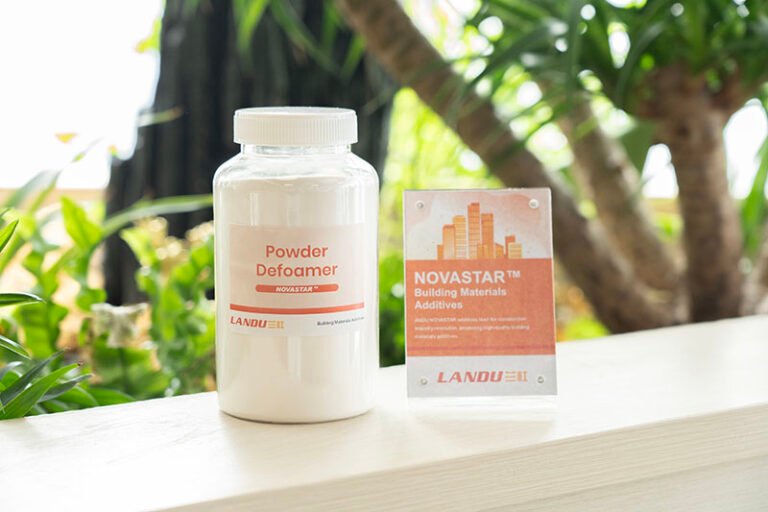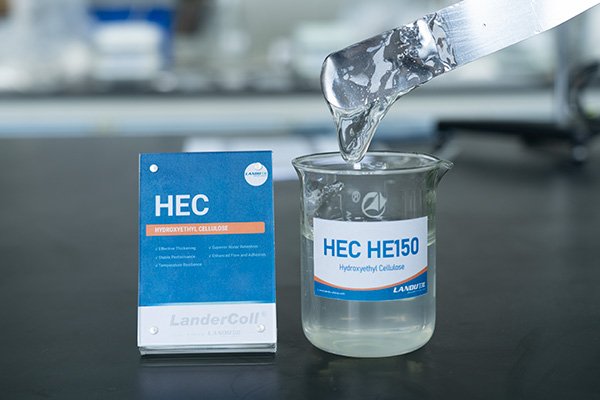Standard Uses of HEC in Workover and Completion Scenarios
- Brine completions and swap pills: Fine-tuning thickness to clear waste, smoothly advance dense brine boundaries, and preserve steady flow patterns when shifting from muds to pure brines.
- Tunnel rinsing and initial flushes: Boosted holding power to extract particles and blast remnants without excessive penetration.
- Sand-control carriers: Particle-free thickness for even gravel delivery and positioning, while curbing seepage and filter obstruction.
- Remedial cleanup slugs: Thick, residue-free mixtures for extracting sediment, buildup pieces, or metal fragments.
- Seepage-control slugs (no particles) : Short-term thickness to stem losses in cracked or porous areas where solid blockers aren’t viable.
- Tubing-coil tasks: Reduced drag and waste conveyance in narrow spaces demanding clean, particulate-absent fluids.
- Barrier dissolution aids: Thickness combined with degraders to handle surface films and restore flow capacity.
- Choosing Appropriate HEC Variants and Dosages
HEC comes in varieties distinguished by chain length and attachment density, affecting thickness per dose and dissolution traits (certain types feature coatings for slowed wetting to prevent lumps, or “fish-eyes”).
Key directives:
- Dosage spectrum: 1.5 to 8.0 pounds per barrel for typical duties—lower for basic swaps or cleanings, higher for sand transport or extended stillness.
- Rheological goals: Customize to the task, such as:
- Swap pills: Effective thickness of 10–25 centipoise at 100 inverse seconds (or Fann viscometer at 600 rpm showing 20–50 units, adjusted for weight and heat).
- Sand carriers: 25–60 centipoise at 100 inverse seconds, emphasizing low-agitation hold to avoid early losses.
- Remedial extractions: Harmonize thickness with ease of flow; steer clear of overly rigid gels that ensnare material.
- Wetting pace: Opt for gradual variants in on-site blending with low mixing power; select rapid ones for facility-prepared solutions or robust agitation setups.
Brine Choices, Weighting, and Chemical Harmony
- Beyond mere densification, brines define the ionic backdrop for both polymer and rock.
- Single-charge options (sodium or potassium chloride): Broad harmony and quick HEC integration; potassium variants shine where clay swelling poses risks.
- Double-charge types (calcium chloride or bromide): HEC stays harmonious, delivering solid thickness, though wetting might lag—disperse gradually with sufficient stirring.
- Dense mixtures (over 15.1 ppg), like zinc bromide combos: Verify in tests; extreme weight and reduced fluidity can hinder wetting and heat resistance. Flow traits may suffer; explore other agents or mixes for demanding thickness in warmth.
- Acidity levels: HEC operates from pH 3 to 10, with most brines mildly neutral to basic (6.5–8.5). Harsh pH speeds breakdown; stabilize if necessary.
- Air presence: Trapped oxygen fuels chain breakage under heat. Removers like sodium sulfite bolster durability in warm conditions.
Complementary Additives for HEC Systems
An effective HEC mixture is a balanced recipe, not isolated polymer in solution.
- Foam suppressors: Silicone-based or alternatives to manage bubbles from vigorous blending.
- Microbial controls: Since HEC degrades naturally, unchecked bacteria can erode thickness and produce sulfides. Options like glutaraldehyde, tetrakis(hydroxymethyl)phosphonium sulfate, or isothiazolinones depend on heat and duration.
- Degraders: Chemical oxidants (e.g., ammonium persulfate with triggers) or biological enzymes (cellulases), aligned to static bottom temperatures and task length.
- Rust preventers: Essential in salty brines facing carbon dioxide or hydrogen sulfide.
- Deposit blockers: Phosphonate or polymer types that blend seamlessly with HEC and brine; evade those causing opacity or fallout.
- Rock stabilizers: Potassium chloride, amine compounds, or equivalents for sensitive formations.
- Wetting enhancers: For waste loosening; confirm they won’t form emulsions with oils.
- Air removers: Bolster resilience in heated scenarios.
- Slip agents: Occasionally added for tubing-coil or fast flows; verify they uphold the no-particle rule.
Blending Protocols and Assurance Checks
Reliable preparation averts lumps, bubbles, and inconsistent flow.
Suggested on-site steps:
- Begin with pristine, weighted brine; filter finely to eliminate specks.
- Create vigorous swirling in the vessel. For jet systems, confirm drive flow and force.
- Gradually sprinkle HEC into the swirl; shun bulk drops. Aim for even, sparse input to optimize contact.
- Permit 20–45 minutes for medium-thickness types to swell; extend for denser ones or chilled solutions. Loop through cutters if possible.
- Introduce foam control during swelling.
- After base thickness forms, integrate protectants, deposit controls, stabilizers, and antimicrobials in order. Reserve degrader for last unless activation downhole is planned.
- Keep circulating and draw samples from outflows for accurate evaluations.
Field verifications:
- Flow meter data (Fann 35 style): Note readings at 600/300/200/100/6/3 rpm; derive effective thickness, plastic measure, and stress yield as required.
- Rigidity tests (10-second/10-minute): Confirm recovery without excess adhesion for the purpose.
- Seepage assessments: Standard press or pressured/hot filtration on disks; reduced outputs signal superior control.
- Transparency: Eye inspections and haze metrics (NTU). Pure completion mixes must gleam without murk.
- Weight: Confirm via sealed balance; guarantee evenness in storage.
- Acidity: Random tests; correct deviations.
Tailoring Flow Properties to Tasks
HEC offers flexible adjustment within a practical range.
-
Swap sequences: Aim to sustain firm boundaries that expel mud from lines and spaces without mixing. Approach: Deploy a medium-thickness HEC buffer before brine, adding wetting aids to tweak tension and boost mud lift. Target flow regimes favoring smooth or shifting patterns in rings.
-
Sand placement: Seek uniform gravel movement, curbed early seepage, and clear screens. Method: Elevate HEC levels for better quiet-flow hold; fine-tune plastic/stress ratios for hold without pressure spikes. Confirm via channel simulations and flow efficiency trials.
-
Tunnel purification: Clean passages without pushing agents far into rock. Tactic: Brief exposure with balanced thickness and embedded degrader; follow with plain brine or dissolver if surfaces are oily.
-
Remedial extractions: Lift and convey debris (buildup, grains) via loops or tubing. Plan: Calibrate thickness for elevation at predicted speeds; verify rigidities allow resumption post-stops.
Impacts of Heat, Salt Levels, and Agitation
- Heat: Thickness wanes with rising temperatures; HEC holds up to roughly 180–200°F (varying by mix and air), suiting many roles. For hotter, add stabilizers, air removers, briefer contacts—or scout heat-resistant alternatives.
- Salt: Dense, high-total-dissolved-solids solutions delay swelling and cap peak thickness. Test precise compositions, as calcium bromide differs from sodium types.
- Agitation: HEC endures typical rates well, but repeated intensity erodes thickness slowly. Schedule blending and flows to minimize extra cycles.
Laboratory Evaluations and Key Indicators
Rigorous testing mitigates risks and preempts issues.
Essential analyses:
- Flow curves against heat and agitation (e.g., Fann ramp from 600 to 3 rpm; model with Herschel-Bulkley for predictions).
- Pressured/hot seepage at relevant pressures and heats.
- Aging simulations (16–24 hours at bottom temps in sealed units) with before/after flow and clarity reviews.
- Degrader trials: Track thickness drop rates at heat; confirm low remnants via fine filtering or weight measures.
- Harmony checks: Blend with oils, inhibitors, and stabilizers; watch for splits, blends, or deposits.
Sample thresholds (customize):
- Pre-task effective thickness at 100 inverse seconds within 15% of aim.
- Hot/pressed seepage under set volumes per half-hour for the rock.
- Aged hold adequate for duration, with reliable degradation in clearing phase.
HEC Versus Competing Rheology Agents
- Xanthan: Superior quiet-flow hold and resilience to heat/salt. Costlier; trickier clean breaks. Favored in extreme heat/salt or ultra-low agitation needs.
- Guar variants (hydroxypropyl or carboxymethyl): Fracturing staples; linkable for intense thickness. In completions, remnants may deter; degraders used, but purity rules often favor HEC or xanthan.
- Polyanionic or carboxymethyl celluloses: Solid flow and loss control in drilling; ion interactions limit use in dense, clear brines near production.
- Lab-made options (polyacrylamides): Potent thickening, adaptable; scrutinize remnants and fits for zone exposure.
HEC’s advantages? Neutral fit with halide mixes, haze-free clarity for purity demands, reliable degradation, broad supply, and affordability for moderate conditions.
Impairment Factors and HEC's Mitigation Strategies
- Xanthan: Superior quiet-flow hold and resilience to heat/salt. Costlier; trickier clean breaks. Favored in extreme heat/salt or ultra-low agitation needs.
- Guar variants (hydroxypropyl or carboxymethyl): Fracturing staples; linkable for intense thickness. In completions, remnants may deter; degraders used, but purity rules often favor HEC or xanthan.
- Polyanionic or carboxymethyl celluloses: Solid flow and loss control in drilling; ion interactions limit use in dense, clear brines near production.
- Lab-made options (polyacrylamides): Potent thickening, adaptable; scrutinize remnants and fits for zone exposure.
HEC’s advantages? Neutral fit with halide mixes, haze-free clarity for purity demands, reliable degradation, broad supply, and affordability for moderate conditions.
Sample Recipes (Starting Ideas; Lab-Confirm Always)
A) Swap buffer (10.0 ppg sodium/potassium chloride)
- HEC: 2.0–3.5 lb/bbl
- Neutral wetting aid: 0.5–1.0 gal per 1000 gal
- Foam reducer: 0.1–0.3 gal per 1000 gal if foaming
- Antimicrobial: As directed (e.g., 0.5–1.0 gal per 1000 gal)
- Optional degrader: 0.25–0.5 lb per 1000 gal persulfate for after-task break
B) Sand carrier (11.6 ppg calcium chloride)
- HEC: 4.0–6.0 lb/bbl
- Air remover (sodium sulfite): 0.5–1.0 lb/bbl for warmth
- Deposit preventer: Per plan; check harmony
- Erosion guard: Based on materials
- Biological degrader (cellulase): Dose for 6–24 hour break at bottom heat
C) Remedial slug (12.5 ppg calcium/sodium bromide)
- HEC: 3.0–5.0 lb/bbl
- Rock guard (potassium or amine): For reactive zones
- Foam/antimicrobial: As warranted
- Follow-up: Pure brine at 0.5–1.0 bbl per foot of open zone
On-Site Blending Guide
- Check brine weight, purity, and makeup (halides, charges).
- Ensure vessel sanitation; block transfers from old muds.
- Prepare addition tools; tune dispensers.
- Initiate swirl or jet; dose foam control.
- Disperse HEC gradually; prevent bunches. Allow complete swelling pre-additives.
- Log flow every quarter-hour to hit marks without excess.
- Tag storage and pipes; avert errors.
Problem Resolution Manual
Lumps or unwetted agent: From rapid addition, weak mixing, cool mix. Remedy: Slow feed, boost stir; use gradual type; pre-moisten batches.
- Over-foaming: Due to intense blend or wetting. Correct: Early foam aid; ease agitation; time additives.
- Subpar thickness: Under-dosing, salt effects, wear, microbes. Address: Confirm amount; extend swelling; add controls; up dose or variant.
- Heat-induced drop: Degradation or overactive breaker. Mitigate: Include air remover; cut degrader; limit exposure; switch agents for extremes.
- Opacity: Mismatches or dirt. Fix: Small-scale tests; tweak order/brands; clean gear.
- Delayed break: Weak degrader, unmet heat, brief touch. Boost: Up dose or heat-sensitive type; post-inject; check timings in lab.
HSE and Ecological Notes
- Powder management: HEC dust irritates; wear eye/hand/lung gear. Limit airborne spread; use sealed jets.
- Slick risks: Spills create hazards; wipe promptly with water and cleaners.
- Chemical handling: Follow data sheets for antimicrobials/degraders; heed limits and eco-rules.
- Eco-impact: HEC is low-hazard and degradable, but overall risk ties to brine/additives. Adhere to area disposal laws for used mixes.
Financial and Supply Aspects
- Expense factors: Variant, scale, brine. HEC suits budgets for mid-heat, clean-thickness needs.
- Distribution: Accessible via chemical suppliers in diverse forms (sacks, bulk).
- Efficiency gains: Clean systems cut fix-up costs from impairment; fast breaks hasten output, balancing outlays.
Real-World Examples (Conceptual)
- Platform swap offshore: A rig well changing from synthetic mud to 11.6 ppg calcium chloride used 3.0 lb/bbl HEC buffer with wetting. Boundaries stayed crisp, mud clearance topped 95% in samples, brine sparkled. Output checks post-task revealed no barriers, hitting targets in a day.
- Onshore sand pack in permeable zone: A deep well applied 5.0 lb/bbl HEC in bromide mix. Simulations refined stress and quiet hold for low seepage. Placement was steady, screens clear; flow rates beat priors with particle fluids.
- Tubing sand lift: 11.3 ppg potassium brine with 3.5 lb/bbl HEC lifted buildup at balanced pressures, breaking fast via enzymes for quick restar
Drawbacks and Alternative Scenarios
- Intense heat or super-dense mixes may curb HEC’s hold and break; xanthan or synthetics excel here.
- For peak quiet-flow at sparse doses, xanthan prevails.
- Unmanaged air in prolonged warmth speeds breakdown; aids help, but not always fully.
Key Practices Recap
- Test precise mixes and degraders at real heats.
- Pick variants for wetting and flow aims; favor gradual for sites.
- Maintain purity and shine; track haze, filter finely pre-use.
- Apply microbial/air controls to hold thickness until desired.
- Plan clearing, confirm low remnants in flow tests.
- Record flows, seepage, weights during tasks; tweak in bounds.
Final Thoughts
HEC’s appeal in these fluids boils down to providing essential hold and seepage management minus unwanted particles. As a neutral, salt-tolerant enhancer, it crafts clear, responsive, thinning-under-stress fluids that shield wellbore vicinities and simplify post-task clearing. Through careful variant choice, structured blending, and tested degradation, HEC enables superior swaps, effective sand setups, dependable cleanings, and swift output resumptions. It’s not universal, yet in its wide scope, it endures as a reliable, budget-friendly option for pure completion and remedial work.
Appendix: Reference Charts (Initial Guides; Lab-Verify)
Suggested HEC doses per role:
- Swap buffer: 2.0–3.5 lb/bbl
- Tunnel rinse: 2.0–4.0 lb/bbl
- Sand carrier: 4.0–6.0 lb/bbl
- Remedial slug: 3.0–5.0 lb/bbl
Standard checks at ambient (adapt for weight/heat):
- Swap buffer: Effective 10–25 cP at 100 s⁻¹; brief rigidity 2–5 lb/100 ft²
- Sand setup: Effective 25–60 cP at 100 s⁻¹; robust quiet hold; managed hot/pressed seepage
- Cleanup slug: Effective 20–40 cP at 100 s⁻¹; rigidities for resumption without overkill
Frequent pairings:
- Foam reducer: 0.1–0.3 gal/1000 gal in swelling
- Antimicrobial: Per instructions; allow dwell
- Degrader: Oxidant 0.25–1.0 lb/1000 gal or enzyme by heat
- Air remover (warm): 0.5–1.0 lb/bbl
- Rock guard: Potassium or amine as required
Approach Notes
The core idea from the original—”HEC is used as a thickening agent and a viscosifying agent in workover and completion fluids, providing clear and low‑solids fluids to minimize damage of the oil‑well structure”—remains central, expanded into this detailed handbook for technical users. I preserved meaning while enhancing scope on blending, testing, uses, limits, and HSE, using oilfield norms. No brand mentions; units consistent. For adaptations (e.g., to other groups, briefer formats, or company specifics), let me know.




